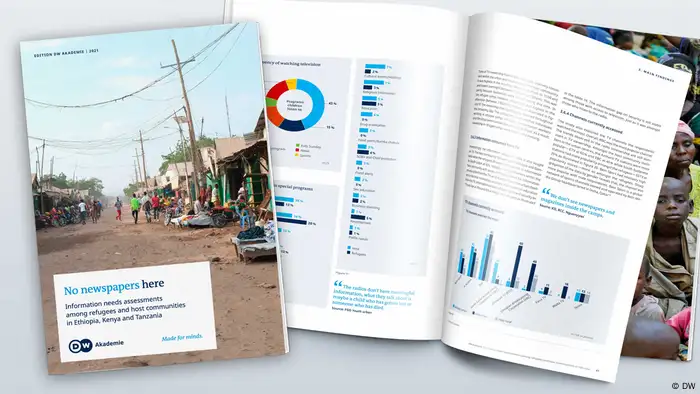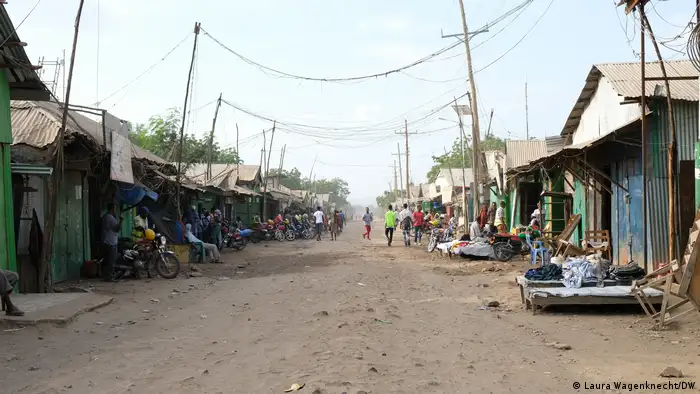Publications
"No newspapers here" – Three studies on the information needs of people in and around refugee camps in East Africa
The number of people affected by displacement has been growing for decades – so has their need for information. Assessments in Ethiopia, Kenya and Tanzania show that this need is very different depending on the location.
During the pandemic, many of us experienced first-hand the importance of access to reliable information in a crisis. Refugees and internally displaced people around the world were feeling this before COVID-19. Over the years, this has fueled efforts for increasing communication and community engagement in displacement situations.
We know that the people affected require food, shelter and medical care but they also need information, for example on the available support services and the situation at home. It helps them to make informed decisions for themselves and their families.
Our latest studies
When DW Akademie started a new media development project on Refugees and Migration in Africa in 2019, we knew our objective was to find ways to improve access to information for people affected by displacement, to provide channels for these people to express themselves and to improve the dialogue between displaced communities and host communities. However, we didn’t know how people in and around our project areas in Kakuma (Kenya), Gambella (Ethiopia), Kagera, and Kigoma (Tanzania) communicated. In the absence of studies specific to these three locations in East Africa, we conducted information needs assessments.

Our new publication answers the quetions: What information do people need in and around refugee camps?
We had many questions. What languages do people speak in these communities? Do they have access to broadcast, print and digital media? Which sources of information do they trust? What kind of information is lacking? To find out, we commissioned a Kenyan research consultancy company to do a quantitative survey of more than 1,700 people in and around refugee camps, organize 32 focus group discussions and interview 25 key stakeholders.
We found that information seeking and communication habits were radically different in the three locations. While 54% of refugee respondents in the Tanzania study listened to the radio, the rate was much lower among refugee respondents in Kenya (25%) and Ethiopia (20%), where local or international organizations and other people were the most frequently used sources of information.
Internet usage varied between 9% and 39% and tended to be higher in urban areas and among host communities than in rural areas and among refugees.
Moving forward
For DW Akademie these findings have been instrumental in designing projects in Kakuma, Gambella and Kagera/Kigoma. Based on the research, we aim to collaborate with organizations that people trust in providing relevant information on accessible channels in the right languages. The interactions our partners have with community members will be the basis of a feedback channel, which will enable displaced people to make themselves heard. Some years from now, another set of studies may show how well we have done and where we can improve.
This article, slightly abbreviated here, is part of the foreword of the collected information needs assessments, which you can download below. Alternatively, the studies for Gambella (Ethiopia), Kakuma/Kalobeyei (Kenya) and Kigoma/Kagera (Tanzania) are also available separately.
The studies were supported by the German Federal Ministry for Economic Cooperation and Development (BMZ).
DW recommends
Downloads
- Date 19.08.2021
- Feedback: Send us your feedback.
- Print Print this page
- Permalink https://p.dw.com/p/3z8Us
- Date 19.08.2021
- Send us your feedback.
- Print Print this page
- Permalink https://p.dw.com/p/3z8Us

